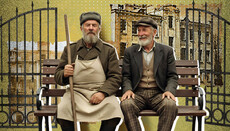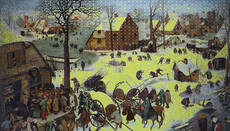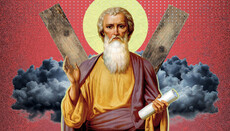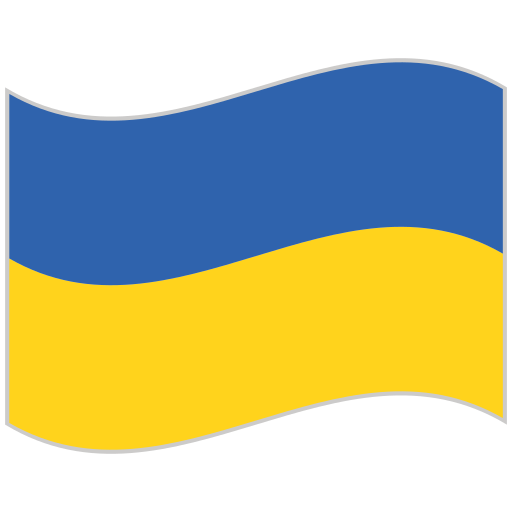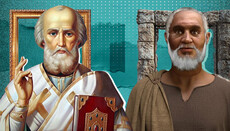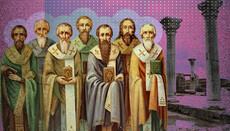VII Ecumenical Council. Part 3. The Triumph of Orthodoxy
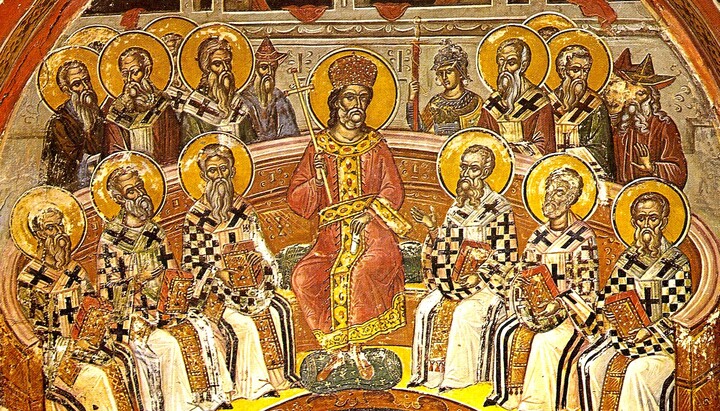
In this final part on the VII Ecumenical Council, we will discuss the recurrence of iconoclasm and the ultimate triumph of Orthodoxy.
The political situation after the VII Ecumenical Council
As has been mentioned many times, theology in Byzantium often became a hostage to politics. This was especially evident during the era of the iconoclastic disputes. Whether Orthodoxy or heresy prevailed was not determined by the truth of a particular teaching but by the political climate.
After the VII Ecumenical Council, the party of iconodules was in power, led by Empress Irene and her son, Constantine VI. However, the latter could only be considered an iconophile in a very conditional sense. Politically, their faction was on shaky ground, as their opponents were numerous and powerful. As previously noted, the iconoclast emperors Leo III and Constantine V Copronymus had been highly successful rulers in political and economic matters and, most importantly, in military affairs. A significant part of society, and an even greater part of the army, approved of their policies and viewed Empress Irene’s rollback of their reforms negatively.
Before long, an opportunity arose to destabilise the position of the iconodule party. As mentioned earlier, Irene had betrothed her son Constantine to the young daughter of Charlemagne, Rotrude. Their formal engagement took place in 781, without Constantine himself being present. Rotrude was actively being prepared for the role of Byzantine Empress, studying with Greek tutors and maintaining an active correspondence with Constantine, who was in love with her in absentia. However, by 788, the political landscape had shifted, and Irene no longer needed Charlemagne’s support. Moreover, she feared that Rotrude, who proved to be intelligent and strong-willed, might seize influence over Constantine VI.
The engagement was annulled, and Constantine VI was instead married to Maria, an Armenian and the granddaughter of St. Philaret the Merciful. The marriage was unsuccessful: Constantine did not love Maria and grew resentful towards his mother. The iconoclasts took advantage of this situation, swayed Constantine to their side, and conspired against Irene. The plot was uncovered, and Irene had her son placed under arrest. From that point, she signed imperial decrees with her name alone, whereas previously, Constantine’s name had also been included. However, unrest continued, and the army revolted, demanding that Constantine be proclaimed sole ruler.
In the end, Irene was forced to hand over power to Constantine, while she herself was placed under de facto house arrest in one of the imperial palaces. From then on, imperial decrees bore only Constantine VI’s name.
Two years later, relations between Irene and Constantine warmed, and her name reappeared on official documents as she partially regained power. However, another conspiracy arose in 793 – this time against Constantine himself. The plot was led by his uncles, Nikephoros and Christopher, sons of Constantine V Copronymus, who had been forcibly ordained as priests. The conspiracy failed, and the plotters had their tongues cut out, their eyes gouged, and were sent into exile.
In 795, Constantine VI forced his wife, Maria, into a convent and married his lady-in-waiting, Theodote. Patriarch Tarasios opposed the marriage as much as he could but was ultimately compelled to give his consent.
Some historians suggest that Constantine coerced consent for his marriage by threatening to reignite iconoclasm. It appears that something of the sort did occur, as the idea of renewing iconoclasm began to resurface.
While Patriarch Tarasios preferred to resist through compromise, the monastic party, led by St. Theodore the Studite, took a strong stand against Constantine and even severed communion with the Patriarch for approving what they deemed an "adulterous" marriage.
Interestingly, the new Empress Theodote was a relative of Theodore the Studite, but he chose to cut all ties with her.
Constantine began persecuting the zealous monks, which provoked widespread dissatisfaction. The zealots spread the belief that the emperor’s marriage was an outrageous injustice and that divine wrath would befall the entire empire because of that. Another conspiracy was formed to depose Constantine and restore Irene to the throne. This time, the plot succeeded.
In 797, on the Feast of the Dormition of the Most Holy Theotokos, Constantine was imprisoned in the Purple Chamber of the imperial palace, the very place where he had been born, and was blinded with such brutality that he soon died. Some chroniclers of the time claim that this was carried out on the orders of his mother, Irene. Regardless of the exact circumstances, Irene once again seized power and became the sole ruler of the empire.
A few years later, an intriguing proposal emerged to unite the Western and Eastern empires through a marriage between Irene and Charlemagne, who had by then been crowned Emperor by Pope Leo III. However, the plan ultimately fell through. In 802, yet another conspiracy was formed against Irene, resulting in her overthrow and exile to the island of Lesbos. According to chronicles, she spent several months in repentance and asceticism before passing away in 803.
Among the reasons for the coup were military failures and ineffective financial policies. The throne was taken by Nikephoros, who had previously served as finance minister. Unsurprisingly, with the change in power, the iconoclasts once again began to gain influence.
Iconoclasm recurrence
Nikephoros was not an iconoclast, but he strongly disapproved of Irene’s financial policies, which had been generous to monasteries and popular initiatives, leaving the imperial treasury severely depleted. He confiscated part of the monasteries’ property and increased taxes, which naturally made the monastic party highly opposed to him.
After the death of Patriarch Tarasios, who had blessed Nikephoros' accession to the throne, the emperor appointed as patriarch his close associate, a secular (!) official also named Nikephoros. The emperor imposed financial restrictions on both the military and the bureaucratic apparatus, which did little to increase his popularity.
Two conspiracies were plotted against him. Though both failed, they were orchestrated by the iconophile faction, which, despite Nikephoros being Orthodox, increasingly pushed him to rely on the support of the iconoclasts. In 811, during a war with the Bulgarians, Nikephoros was killed. He was succeeded by his son, Staurakios, but just 68 days later, he retired to a monastery, where he soon died. The throne then passed to Nikephoros’s son-in-law, Michael I Rangabe.
This new emperor was a staunch supporter of the monastic party. He recalled all the exiled zealots and awarded many of them high-ranking government positions. Theodore the Studite became a close associate of Patriarch Nikephoros and an advisor to the emperor.
Despite his sanctity, the chronicles describe St. Theodore as a "wicked counsellor" because his advice ultimately cost Emperor Nikephoros his throne.
In 812, the Bulgarians, who were at war with the Greeks, proposed peace on the condition of a mutual exchange of defectors. The patriarch and senior metropolitans advised accepting the offer, but Theodore insisted on rejecting it. Emperor Nikephoros followed Theodore’s advice, the war continued, and the Bulgarians emerged victorious.
As a result of this military defeat, the iconoclast party staged an uprising. They stormed the church where Constantine V Copronymus was buried and, shouting, “Rise and save the perishing state,” opened his tomb. A rumour quickly spread that Copronymus had risen from his grave on horseback and was riding off to war against the Bulgarians.
The rebellion did not immediately overthrow Emperor Nikephoros, but it greatly popularised the idea that military failures were due to the revival of icon veneration – after all, under the iconoclasts, the empire had enjoyed military success. Ultimately, Nikephoros was forced to abdicate and retire to a monastery. He was succeeded by a declared iconoclast, Leo V the Armenian.
The second period of iconoclasm (814–842) began in much the same way as the first one (730–787) – with peaceful requests to move the icons out of sight.
The chronicles attribute the following words to Emperor Leo, addressed to Patriarch Nikephoros: "The people and the army are in uproar against the icons, saying that we venerate them incorrectly, and that is why we are overcome by our enemies. Make a concession – remove some things from public view."
Leo then arranged a debate between certain clergy who supported him and the iconophile party led by Theodore the Studite. The debate achieved nothing except to deepen the hostility between the iconoclasts and iconophiles. For example, the image of Christ on the Chalke Gate, which had suffered during the first period of iconoclasm, was once again pelted with stones – this time by soldiers. Leo then ordered the image to be removed under the pretext of protecting it from desecration.
The emperor also began to pressure the patriarch, accepting complaints from the clergy against him, demanding an account of church property usage (sound familiar?), etc.
On 20 March 815, Patriarch Nikephoros abdicated the throne and retired to a monastery. The most resolute and uncompromising defender of icon veneration was St Theodore the Studite. However, in the long run, he also did Orthodoxy a disservice.
As iconoclasm loomed once more, he, as before, turned to the Roman See for support. Yet, in the heat of his struggle against the iconoclasts, he attributed to the Roman pontiff not only primacy of honour but also supreme authority over the entire Church.
He declared that the Pope of Rome was the successor of the Apostle Peter, who was "the chief among the apostles, the first leader, the primatial throne-holder", that he was given the keys to the Kingdom of Heaven, that the Roman Church was the foremost of God's churches, the first of all churches, the preeminent one. He described the Pope as "the supreme shepherd of the Church under heaven, the primatial throne-holder, the chief among patriarchs, the divine head of all heads" and insisted that "he is to be consulted for the resolution of doubtful and disputed matters, as was done in ancient times and from the beginning according to the fatherly tradition, for there is the highest of God’s churches. He as the successor of the Apostle Peter must be informed of all newly introduced deviations from the truth in the Catholic Church."
Most unpleasantly and inconsistently with the Orthodox teaching on the Church, St Theodore placed the authority of the Pope above that of the Ecumenical Councils, and he made the validity of such Councils dependent on the Pope’s opinion.
"By the ancient established custom, a Council cannot be convened without his (the Pope's) knowledge. <...> The authority of the Ecumenical Council depends on him (the Pope of Rome)," asserted Theodore.
It is no surprise that to this day Catholic theologians, quoting St Theodore’s words, argue that in the first millennium all Churches recognised the authority of the Pope over them, and that the Orthodox are indeed schismatics, having split from the Roman Church in 1054.
But let us return to the second period of iconoclasm.
On 1 April 815, during the feast of Pascha, a certain Theodore, a relative of Constantine Copronymus, the commander of the imperial guard, an uneducated man who could not speak in public, was appointed Patriarch of Constantinople. The chronicle describes him as follows: "More voiceless than a fish, speechless, beast-like, and knowing nothing except impiety." In the same year of 815, a Council was convened that unhesitatingly declared the iconoclast Council of 754 as valid (though not calling it ecumenical) and the VII Ecumenical Council of 787 as null and void. Hierarchs who attempted to oppose these decisions were beaten, anathematised, and exiled.
St Theodore the Studite was treated particularly harshly. At that time, he said to Emperor Leo words that all rulers, especially the present ones, would do well to remember: "Listen, O king, to what the Divine apostle said: place God first in the Church, then the apostles, next the prophets, the pastors and teachers, but he did not say: kings. You are entrusted with the governance of the state and the army; take care of that, but leave the Church alone."
But Leo did not leave the Church alone – not only did he remove the icons from the churches, but he also ordered the removal of all texts from the liturgical books that contained ideas of icon veneration. According to historians, this persecution was systematic and widespread, characterised by a pervasive practice of denunciation.
In the end, Leo V the Armenian met a very bad fate. His actions alienated a part of society, including from the upper classes. Once again, a conspiracy was formed, which resulted in Leo being brutally killed in the altar of the church, where he had fled, escaping from his assassins.
The chronicle recounts that he grabbed a cross and began to wave it around, pleading for mercy, but heard in response: "Now is not the time for mercy, but for murder." First, his arm holding the cross was severed, and then his head. His body was dragged to the hippodrome, and after being thoroughly abused, it was thrown into the sea.
Michael II the Stammerer ascended the throne. At first, St Theodore the Studite and the iconophile party saw him as an ally, but they were mistaken. Michael was an iconoclast, which did not prevent him from pursuing a policy of religious tolerance. He declared: "I ascended the throne not to introduce new dogmas of faith, nor to change the already accepted and practesed dogmas. So, let each person act as they wish in this matter, without fear of any troubles or deprivation."
His son, the next emperor Theophilus, who ascended the throne after his father’s death in 829, was completely different. Theophilus was an educated, deeply religious man who loved the Divine services and even led the church choir. However, he was a cruel and determined iconoclast.
Right after his accession, he ordered the execution of the murderers of Leo V the Armenian, despite the fact that it was thanks to them that both his father and he himself ended up on the throne. He then ordered that, during tax collection, the entire population be surveyed regarding their stance on icons. Iconoclasts were granted privileges, while iconophiles were treated the opposite.
In 833, Theophilus appointed his teacher, the fanatical iconoclast John the Grammarian, as Patriarch. In the same year, a council was convened that anathematised all iconophiles.
The brutal persecutions began. Iconophiles were tortured, killed, and exiled. Often, one's life could be spared at the cost of desecrating icons.
Monks also faced persecution. Some historians argue that the cruelty of the persecutions under Theophilus reached its peak during this time.
However, despite this, icon veneration lived on within the emperor's own family. His wife Theodora, whom he married in 831, was a secret iconophile and instilled this belief in their children. In 839, their son, the future emperor Michael III, was born (prior to this, only daughters had been born). In 842, Theophilus passed away, and his two-year-old son, Michael, was proclaimed emperor, under the regency of his mother, Empress Theodora.
The Triumph of Orthodoxy
The restoration of icon veneration took place almost immediately after Theophilus' death, despite his dying wish for his successors to "leave everything as it was". This met with little or no protest anymore. According to church historian A. Kartashev: “Iconoclasm exhausted itself, came to an end politically and culturally, not to mention its theological groundlessness.” The party of iconoclasts remained, but iconoclasm ceased to be an ideology that could be raised as a banner for political struggle.
Patriarch John the Grammarian was deposed and exiled. He was replaced by Saint Methodius, a confessor who had endured both imprisonment and exile. In 842, a Council was convened that affirmed icon veneration, anathematised iconoclasm, and confirmed the decisions of all seven Ecumenical Councils, including the Council of Constantinople of 787.
Although Empress Theodora was a staunch supporter of icon veneration, she conditioned the Council not to anathematise her late husband, the cruel iconoclast Theophilus, arguing that he had repented before his death. This was likely not the case, as there is no evidence for it beyond Theodora's own words. In any case, the Council of 842 granted Theodora a written document of forgiveness for Theophilus.
On 11 March 843, Theodora arranged a grand celebration, which coincided with the first Sunday of Great Lent that year. The chronicle describes the event: "The Empress proposed to the Most Holy Patriarch Methodius to notify and gather all the Orthodox metropolitans, archbishops, abbots, clergymen, and laypeople, so that they could come to the Great Church of God with honourable crosses and holy icons on the first Sunday of the holy Lent. When an innumerable multitude had gathered, Emperor Michael himself came with his holy and Orthodox mother and with all the synkletos, each holding a royal candle. Joining the holy Patriarch, they moved from the altar with holy icons, the venerable cross, and the holy Gospel, proceeding in procession until they reached the gates of the palace, the so-called Centauri. After a long prayer and heartfelt lamentations of 'Lord, have mercy', they returned to the holy church to celebrate the divine sacramental liturgy with great joy and triumph."
After the liturgy, a festive banquet was held in the royal palace.
Later on, such celebrations became traditional for the first Sunday of Great Lent, eventually evolving into the Triumph of Orthodoxy over all heresies. The liturgical order now included the anathematisation of heretics and the proclamation of eternal memory and many years for the Orthodox.
Conclusion
Many believe that this marks the end of the history of the Ecumenical Councils. However, this view is not the only one in the Church. There is a perspective that considers at least two more councils as Ecumenical: the Great Council of Hagia Sophia (the Fourth Council of Constantinople) in 879–880, which condemned the Latin Filioque doctrine, and the Fifth Council of Constantinople in 1341–1351, which affirmed the teaching of Saint Gregory Palamas on the Uncreated Light.
Whether these Councils should be regarded as Ecumenical is for each to decide, but since they affirmed doctrines accepted by the entire Orthodox Church, we will dedicate the next two publications to them.
